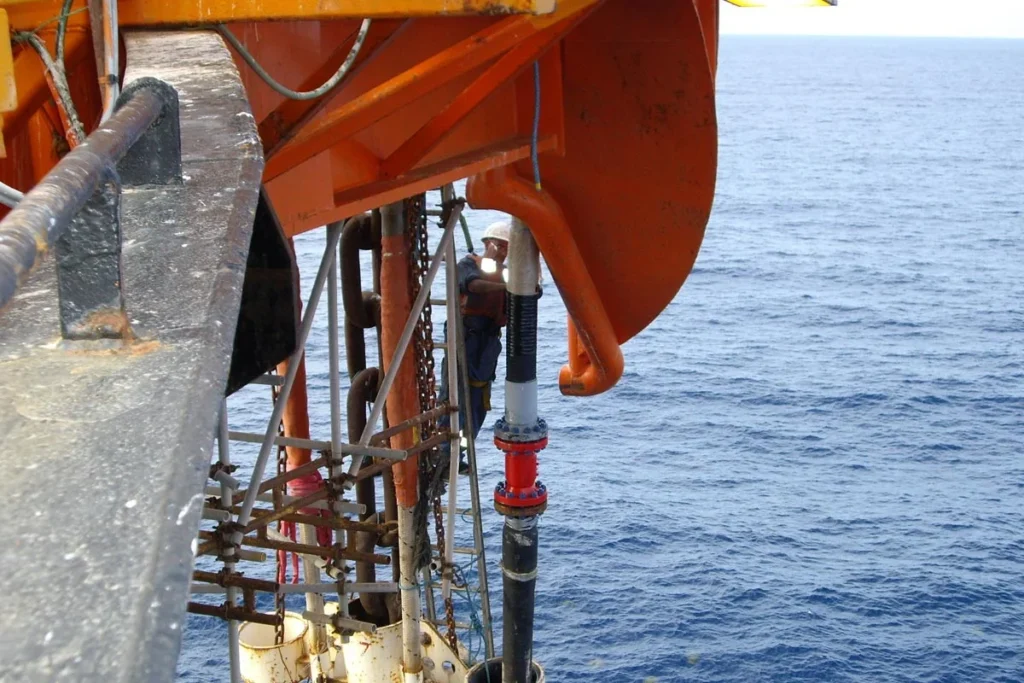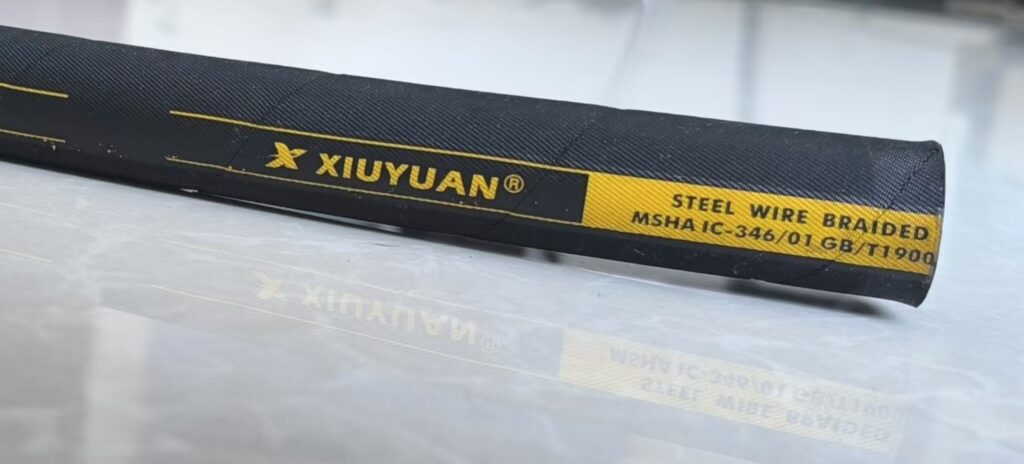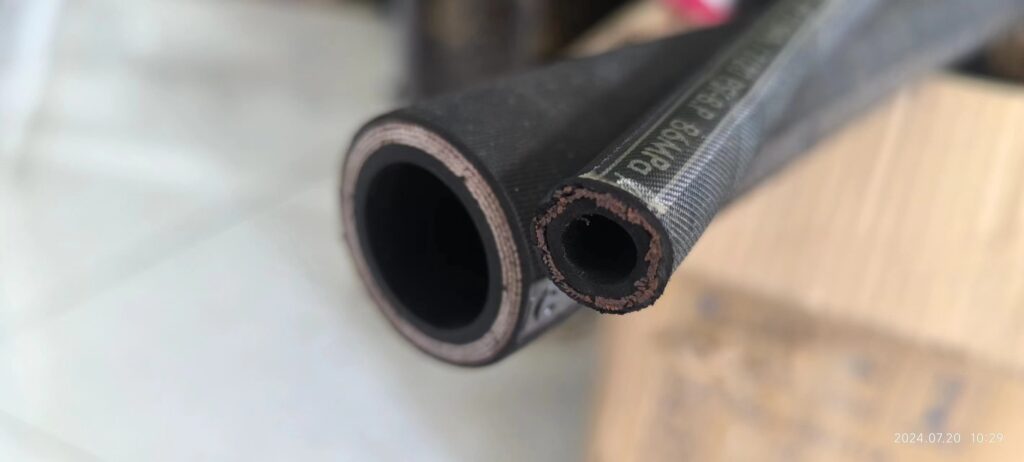Hydraulic hoses are flexible tubes that are used to transmit fluid pressure in hydraulic systems. They are typically composed of several layers of materials to provide strength, flexibility, and resistance to the pressures and conditions encountered in hydraulic applications. The main types of raw materials used in hydraulic hoses include:
Inner Tube Material
The inner tube material of a hydraulic hose is a crucial component that directly interacts with the hydraulic fluid and provides a barrier between the fluid and the hose’s reinforcement layers. The choice of inner tube material depends on factors such as the type of hydraulic fluid used, temperature range, pressure rating, compatibility, and environmental conditions. Here are some commonly used inner tube materials:
Synthetic Rubber: Synthetic rubber compounds, such as Nitrile rubber (NBR), Neoprene (CR), or Ethylene Propylene Diene Monomer (EPDM), are widely used as inner tube materials. They offer excellent resistance to hydraulic fluids, oils, fuels, and moderate resistance to heat and abrasion.
Thermoplastic: Certain hydraulic hoses may feature an inner tube made of thermoplastic materials, such as Polyamide (Nylon) or Polyurethane (PU). Thermoplastic inner tubes offer high chemical resistance, good flexibility, and a wide temperature range.
The choice between synthetic rubber and thermoplastic depends on the specific requirements of the application. Synthetic rubber is generally preferred for higher-pressure applications and where compatibility with a wide range of hydraulic fluids is necessary. Thermoplastic inner tubes are often used in applications where weight reduction, flexibility, or resistance to certain chemicals is essential.
Reinforcement Layers
Hydraulic hoses have reinforcement layers to enhance their strength and resistance to pressure. The most common types of reinforcement materials used are:
Steel Wire:High-tensile steel wires, usually braided or spiraled, provide excellent strength and flexibility. They are commonly used in high-pressure applications.
Textile:Materials like polyester or aramid fibers are used to reinforce hydraulic hoses in lower pressure applications. They offer good flexibility and moderate strength.
Outer Cover
The outer layer of a hydraulic hose, known as the cover, is designed to protect the hose from external factors such as abrasion, chemicals, weather conditions, and UV radiation. The cover is typically made of synthetic rubber or thermoplastic materials, depending on the specific requirements of the application.
Additional Materials
Various other materials can be used in hydraulic hoses to enhance their performance or meet specific requirements. These may include adhesives, sealing compounds, and additives for improving resistance to heat, ozone, or flame.
It’s important to note that the specific composition and materials used in hydraulic hoses can vary depending on the manufacturer, the intended application, and industry standards. Therefore, it is always advisable to consult the technical specifications or contact the manufacturer for precise information about the raw materials used in a particular hydraulic hose.





